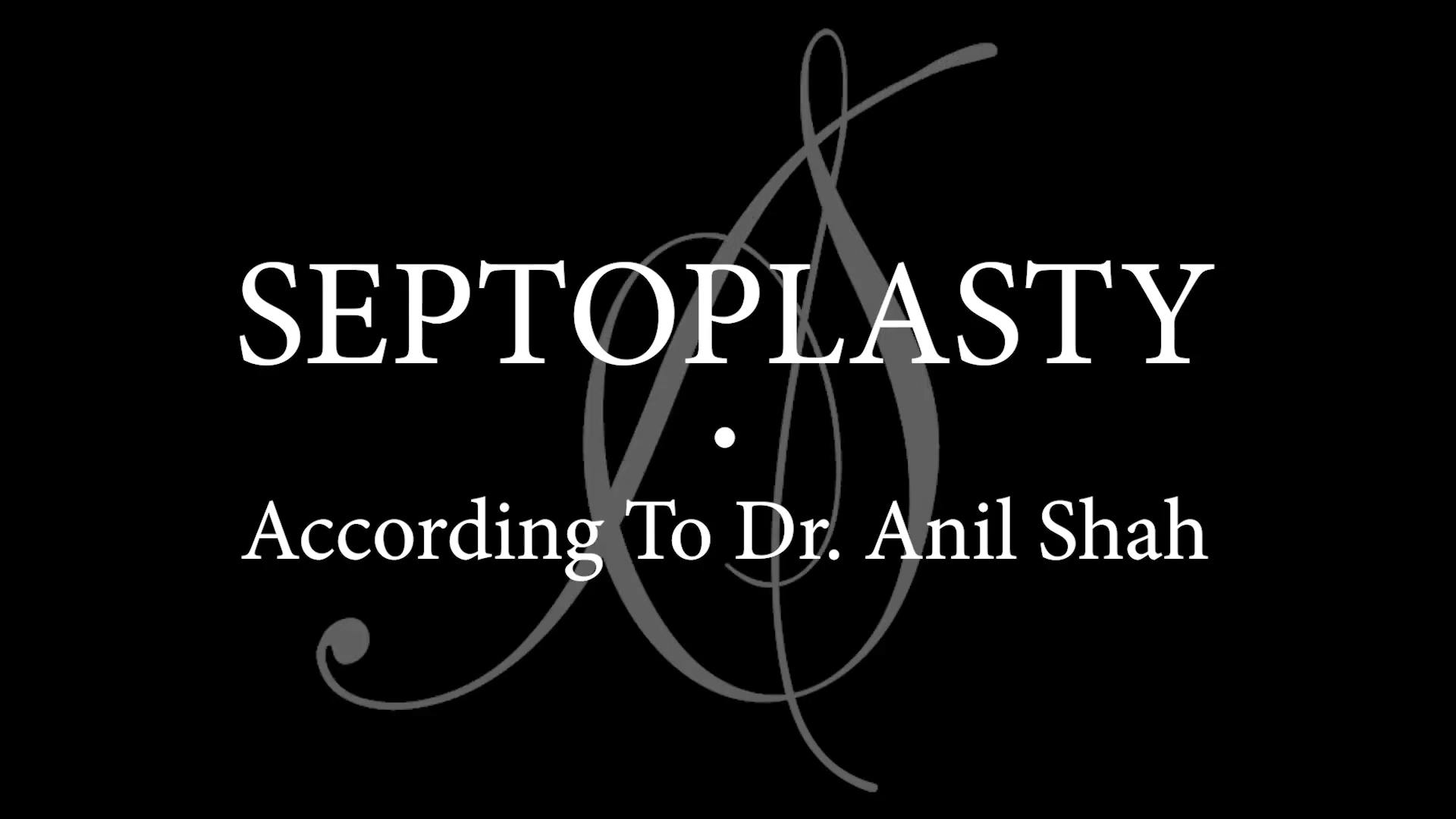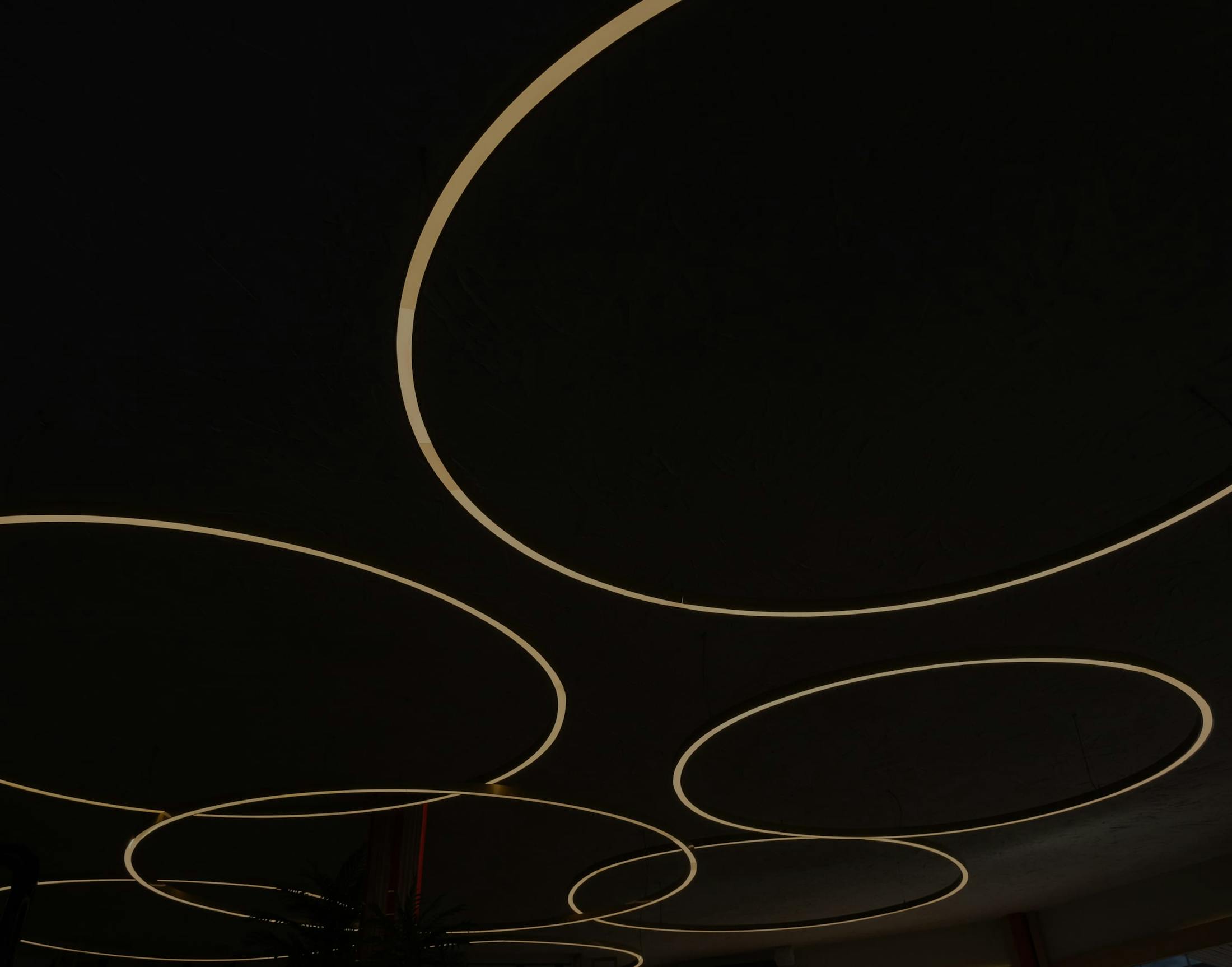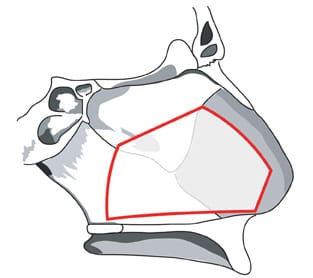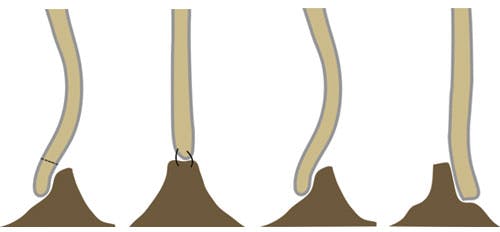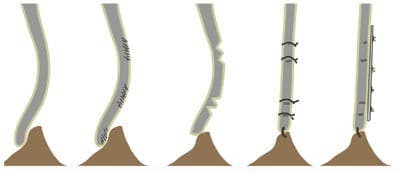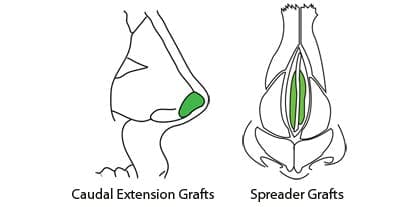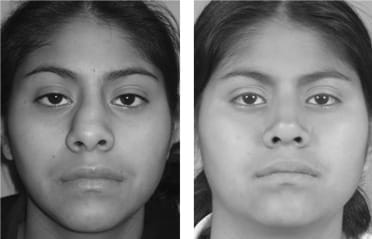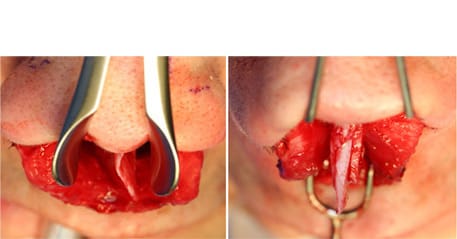According To Dr. Shah | Chicago, IL
What is septoplasty?
Septoplasty is the alteration of the septum to straighten the airway and/or remove cartilage for cartilage grafting. The most common form of this is a submucous resection. This is where the surgeon preserves an L-shaped strut of cartilage to not change the nasal appearance. The surgeon then removes the cartilage which is presumably causing the nasal obstruction.
Why is this concept flawed?
Simply removing the cartilage from the nose in this location will not correct the majority of septal deviations. Unfortunately, many surgeons use this as their approach to all septal deviations. A well-thought-out approach to the location of the septal deviation is necessary. If it is located in the anterior portion of the nose, This deviation will be corrected or the patient will likely not have enough of an improvement postoperative. There are a variety of procedures the surgeon can do to straighten this including a swinging door, a modified swinging door, and a total septal reconstruction. Some surgeons use scoring and sutures. This may be appropriate in milder cases of deviation, but will not work in severe deviations. The most difficult area to address is if the dorsal (top) part of the septum deviates. Commonly spreader grafts can be placed aside the septum to attempt to straighten it. Sometimes, total septal reconstruction is necessary to straighten the septum. For this reason, many surgeons have difficulty with crooked nose deformities. Even if the septum is completely replaced, it still may be crooked postoperative.
I just want to breathe better, will my nose look the same after surgery?
Maybe. Dr. Shah just performed a study looking at nasal tip projection with septoplasty on cadavers. All of the noses lost projection after the completion of more advanced SMR techniques. It is critical that if your nose has an advanced septal deviation, an expert in external as well as internal support of the nose can perform the surgery. Your surgeon should be able to reestablish projection in case there is a noticeable change. If he can not, consider looking elsewhere.
In addition, if you require the support of the nasal valves, your nose will likely become slightly fuller alongside the nasal tip. Usually, this is temporary fullness, but in patients with sufficient collapse requiring larger grafts, this fullness may be permanent.
My plastic surgeon wants to use an ENT to do the septoplasty and he is going to do the rhinoplasty, any concerns?
Yes, you should be very concerned. If your rhinoplasty surgeon can not perform a septoplasty he can probably not be doing a rhinoplasty. The septum plays a fundamental role in rhinoplasty. The septum lays the foundation for the rest of your nose. You would not go to a builder who could not lay down a foundation. If your septum is crooked and not corrected properly (see above) you will be left with a crooked nose.
What are septal spurs?
Along the floor of the nose, there may be bony or cartilaginous projection into the nose which can cause nasal obstruction. These can be removed by a variety of methods to open the airway including osteotomies or powered instrumentation.
If my septum is crooked, how come I can’t see it?
You may or may not be able to see it depending on what portion is crooked. If the very anterior portion (front) of the surface is crooked, you may notice on the base view or the nasal tip with slight deviation. If the dorsal portion (top of the septum) is crooked, you may notice that the nose is crooked as well.
What is a septal deviation?
A septal deviation is a septum which obstructs the airway. It can be tilted to one side, curved to one side, curved and recurved.
Why do people have deviated septums?
No one really knows. Some people speculate that birth trauma plays a role. Trauma later in life can also lead to deviation. One study cites 80% of the adult population has a deviated septum. A deviated septum in and of itself is not a problem unless it causes nasal obstruction or deformity.
What does Dr Shah do with the cartilage he removes?
In some cases, he uses the cartilage for other areas of the nose or septum to support the nose. This can support the valves of the nose, provide aesthetic improvements, or help straighten the septum. If none of these changes are necessary, Dr. Shah will crush the cartilage and place it back in the septum. He does this for a variety of reasons. Cartilage in between the flaps can help prevent floppy septum syndrome. Cartilage placed back in the nose can serve a functional or aesthetic purpose if a procedure is needed in the future due to a traumatic accident.
Should I do my septoplasty at the same time or different time than my rhinoplasty?
Patients should always do a rhinoplasty and septoplasty at the same time. First of all, some of the deviated portions of cartilage can help support the nose post-procedure and make aesthetic changes to the nose. Not having this portion of cartilage, may make a subsequent rhinoplasty more complex and may necessitate the use of either ear or rib cartilage. In addition, a combination of the two procedures allows for one recovery. Finally, it is typically less costly to perform a rhinoplasty with a septoplasty with insurance than a rhinoplasty alone.
What septoplasty office is near me?
If you live near Chicago, IL, Anil Shah Facial Plastic Surgery offers septoplasty among its services and is conveniently located at 200 West Superior St., Suite 200 Chicago, IL 60654


